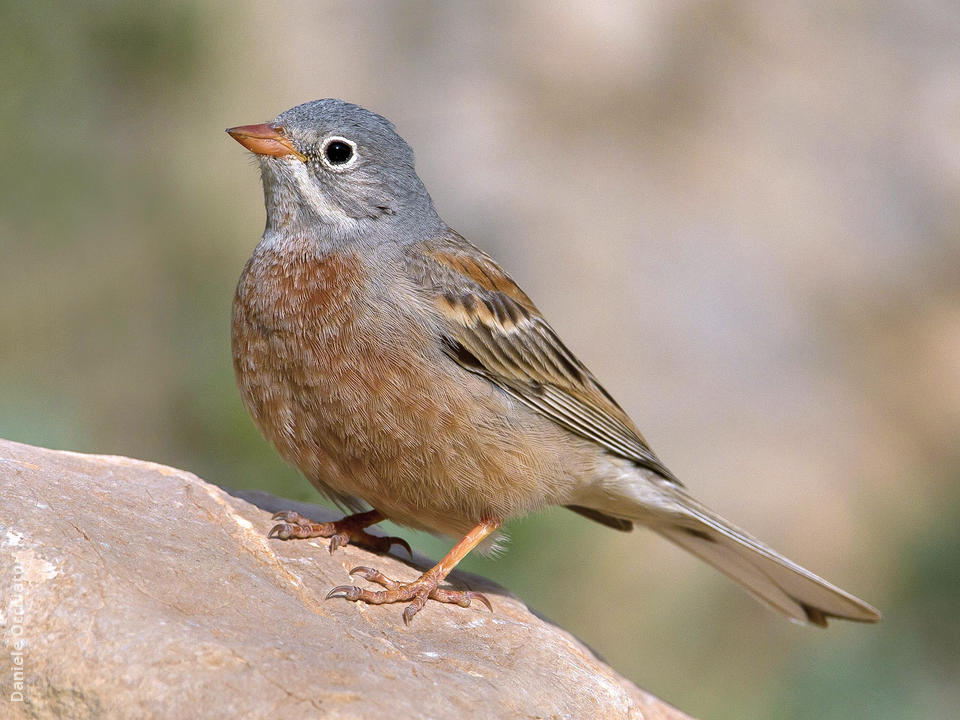Grey–necked bunting: Red Data Book of Armenia

Buntings, seed–eaters and relatives - Emberizidae
Status. A rare oligotopic species. Listed in the IUCN Red List of Threatened Species (ver. 3.1) as Least Concern. According to IUCN criteria categorized as Vulnerable VU B1ab(iii)+2ab(iii).
Distribution. The species is spread from the South Caucasus and Turkey to Iran and Southern Turkmenistan.
Distribution in Armenia. Occurs in Western Armenia's semi–deserts and on the southern slopes of the Mt. Aragats and the Pambak Ridge up to 1900 m above sea level.
Habitats. Gentle slopes covered with semi–desert vegetation with an essential presence of scrubs.
Biological traits. The spring migration was recorded in April. The breeding season is May to July. Nests are built beneath the stones or scrubs. The clutch consists of 3–5 eggs. The brooding period is 13 days. Hatchlings eat seeds, butterfly caterpillars, different insects and their larvae. Fledglings leave the nest on the 11th to 13th days. Eggs are newly laid in July–August. Flying juveniles are recorded from mid–June to August. Migration begins in early September.
Population size and its trends. Rare. Available information is insufficient to judge about the population size. The encounter rates in suitable habitats are quite high.
Major threats. Encroachment of semi–deserts for agricultural use.
Conservation measures. Some nesting sites are located in Khosrov Forest Reserve. It is essential to carry out thorough studies of this species and to include it to the plan of biodiversity monitoring for annual census. Considering the small size of the species range in Armenia, limited habitat selectivity and intensive habitat use by humans, it is important to reconsider the land use policy in semi–deserts and to proceed with the establishment of sanctuaries. It is also crucial to raise public awareness about the importance of conservation of this species.
Suggestions
 The Ministry of Environment sent a letter international partners to draw their attention to the real danger of environmental disasters as a result of Azerbaijan's large-scale aggression towards the territory of Armenia
The Ministry of Environment sent a letter international partners to draw their attention to the real danger of environmental disasters as a result of Azerbaijan's large-scale aggression towards the territory of Armenia
 Vicia pisiformis: Red Data Book of Armenia
Vicia pisiformis: Red Data Book of Armenia
 Vavilovia formosa: Red Data Book of Armenia
Vavilovia formosa: Red Data Book of Armenia
 Trigonella capitata: Red Data Book of Armenia
Trigonella capitata: Red Data Book of Armenia
 Trigonella astroides: Red Data Book of Armenia
Trigonella astroides: Red Data Book of Armenia












